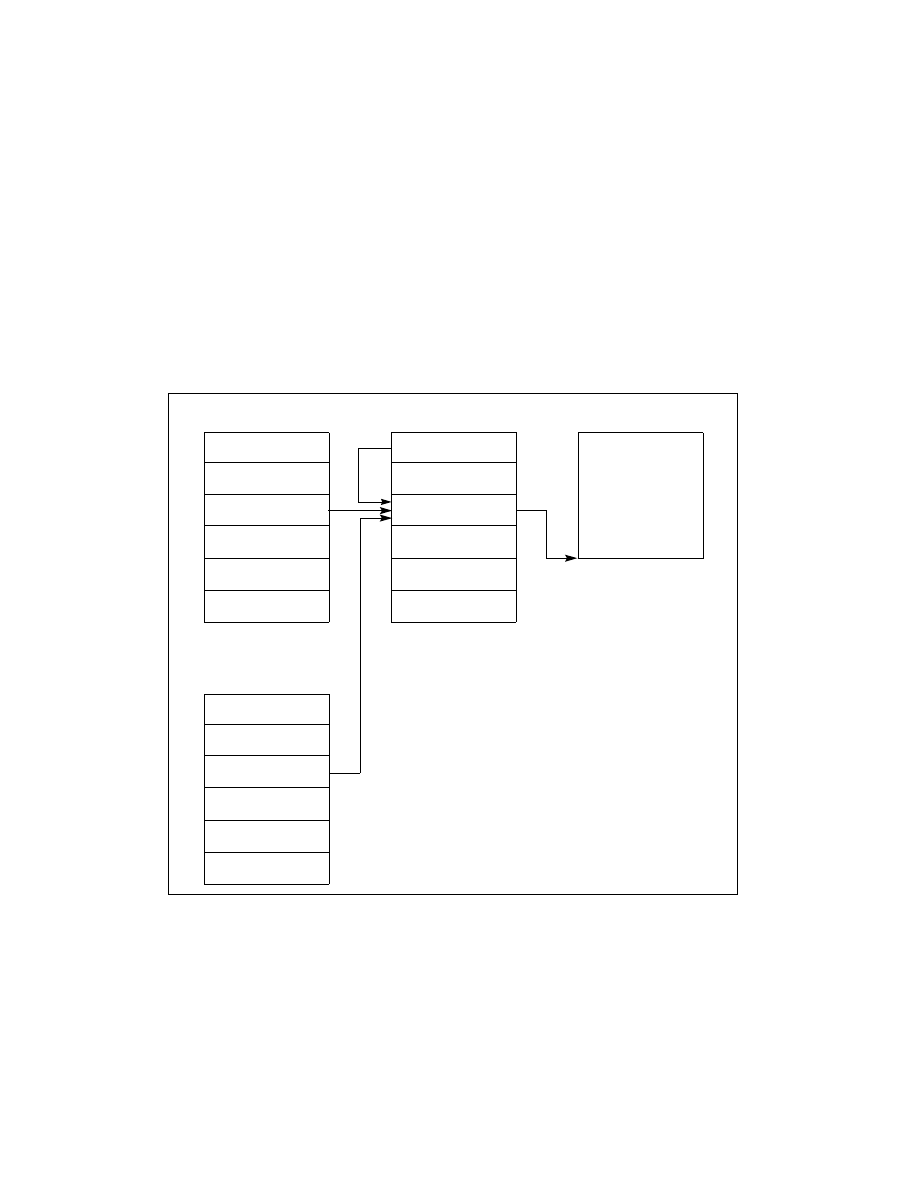
Vol. 3A 7-9
TASK MANAGEMENT
A task can be accessed either through a task-gate descriptor or a TSS descriptor. Both of these structures satisfy
the following needs:
•
Need for a task to have only one busy flag — Because the busy flag for a task is stored in the TSS
descriptor, each task should have only one TSS descriptor. There may, however, be several task gates that
reference the same TSS descriptor.
•
Need to provide selective access to tasks — Task gates fill this need, because they can reside in an LDT and
can have a DPL that is different from the TSS descriptor's DPL. A program or procedure that does not have
sufficient privilege to access the TSS descriptor for a task in the GDT (which usually has a DPL of 0) may be
allowed access to the task through a task gate with a higher DPL. Task gates give the operating system greater
latitude for limiting access to specific tasks.
•
Need for an interrupt or exception to be handled by an independent task — Task gates may also reside
in the IDT, which allows interrupts and exceptions to be handled by handler tasks. When an interrupt or
exception vector points to a task gate, the processor switches to the specified task.
Figure 7-7 illustrates how a task gate in an LDT, a task gate in the GDT, and a task gate in the IDT can all point to
the same task.
7.3 TASK
SWITCHING
The processor transfers execution to another task in one of four cases:
•
The current program, task, or procedure executes a JMP or CALL instruction to a TSS descriptor in the GDT.
•
The current program, task, or procedure executes a JMP or CALL instruction to a task-gate descriptor in the
GDT or the current LDT.
Figure 7-7. Task Gates Referencing the Same Task
LDT
Task Gate
TSS
GDT
TSS Descriptor
IDT
Task Gate
Task Gate